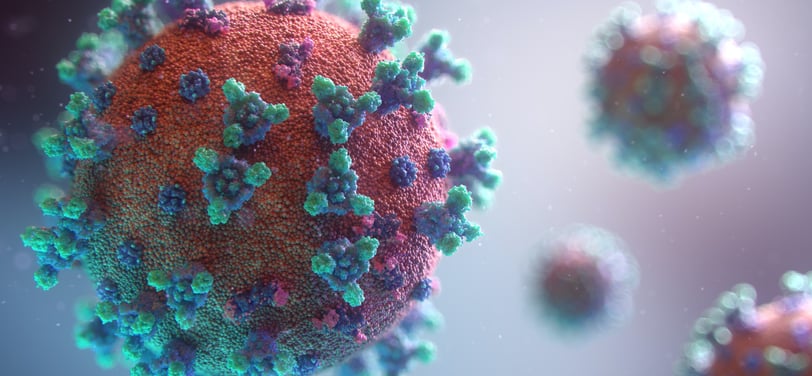Navigating the COVID-19 Era: Understanding, Preventing, and Thriving
Understanding about corona virus and prevention to be taken for protection


Introduction
In the wake of an unprecedented global pandemic, the world finds itself grappling with the challenges posed by the infamous COVID-19. It has not only reshaped our daily lives but has also underscored the critical importance of understanding and preventing the spread of the virus. As we navigate these uncertain times, it becomes paramount for individuals to be well-informed about COVID-19 and to adopt preventive measures to protect themselves and their communities.
Understanding COVID-19
COVID-19, short for Coronavirus Disease 2019, is caused by the novel coronavirus SARS-CoV-2. The virus primarily spreads through respiratory droplets when an infected person coughs, sneezes, or talks. Recognizing the symptoms – which include fever, cough, and shortness of breath – is crucial for early detection and prompt action.
Staying informed about the virus is equally vital. Regularly checking reliable sources for updates ensures that individuals are aware of the latest developments, prevention guidelines, and vaccination efforts. In a world inundated with information, being discerning about news sources helps in separating facts from misinformation.
Preventive measures are the cornerstone of the global effort to mitigate the spread of COVID-19. While vaccinations are crucial, especially in achieving herd immunity, it's equally important to focus on everyday actions that individuals can take to protect themselves and others. Let's delve deeper into the preventive measures:
Social Distancing:
Why it Matters: COVID-19 primarily spreads through respiratory droplets, and maintaining a physical distance from others helps reduce the risk of transmission.
Practical Tips: Avoid crowded places, keep a distance of at least six feet from others, and consider remote work when possible. In social settings, opt for outdoor activities, where transmission is less likely.
Masks:
Effectiveness: Masks act as a barrier, preventing respiratory droplets from reaching others and offering some protection for the wearer.
Proper Usage: It's essential to wear masks consistently, covering both the nose and mouth. Cloth masks are effective, but higher-risk settings might necessitate the use of medical-grade masks.
Hand Hygiene:
Why it's Crucial: Hands are a common vehicle for transmitting the virus. Regular handwashing reduces the risk of infection.
Best Practices: Wash hands with soap and water for at least 20 seconds, especially after being in a public place, touching your face, or coughing/sneezing. If soap is unavailable, use a hand sanitizer with at least 60% alcohol.
Vaccination:
Importance: Vaccination is a powerful tool in preventing severe illness, hospitalization, and death from COVID-19. It also contributes to community immunity.
Myth Dispelling: Address common misconceptions about vaccines, emphasizing their safety, efficacy, and the rigorous testing they undergo. Reliable information from healthcare professionals helps counter vaccine hesitancy.
Cleaning and Disinfecting:
High-Touch Surfaces: Regularly clean and disinfect surfaces that are frequently touched, such as doorknobs, light switches, and electronic devices.
Household Settings: If someone in your household is sick or has tested positive, take extra precautions by disinfecting shared spaces and items regularly.
Respiratory Etiquette:
Cover Your Mouth and Nose: Encourage individuals to cover their mouth and nose with a tissue or their elbow when coughing or sneezing.
Disposal of Tissues: Dispose of used tissues in a lined trash can and wash hands immediately.
Remote Communication:
Virtual Meetings: Whenever possible, opt for virtual meetings to reduce in-person interactions, especially in areas with high transmission rates.
Telecommuting: Support and encourage remote work arrangements to minimize exposure in workplaces.
Stay Informed:
Reliable Sources: Rely on trustworthy sources for information about COVID-19. Misinformation can be harmful, so fact-check before sharing information.
Adapt to Changes: Stay abreast of updates in guidelines and recommendations from health authorities. Adjust your behavior based on the evolving understanding of the virus.
Boosting Immunity
Healthy Lifestyle: A balanced diet rich in vitamins and minerals, coupled with regular exercise, plays a pivotal role in maintaining a robust immune system. Consuming a variety of fruits, vegetables, and whole grains provides the body with the necessary nutrients for optimal function.
Adequate Sleep: Quality sleep is often underrated but is integral to immune health. During sleep, the body repairs and rejuvenates, strengthening its ability to fight off infections. Aim for 7-9 hours of uninterrupted sleep each night.
Public Awareness
Raising public awareness about COVID-19 is an ongoing effort that relies on everyone playing their part. Sharing accurate information with friends, family, and on social media platforms helps combat misinformation. Encouraging others to follow preventive measures and get vaccinated contributes to the collective well-being of the community.
In conclusion, understanding and preventing the spread of COVID-19 requires a collective effort. By staying informed, adopting preventive measures, boosting our immunity, and promoting public awareness, we can navigate these challenging times together. It's a shared responsibility that transcends borders, reminding us that our actions today shape the world we inhabit tomorrow.
